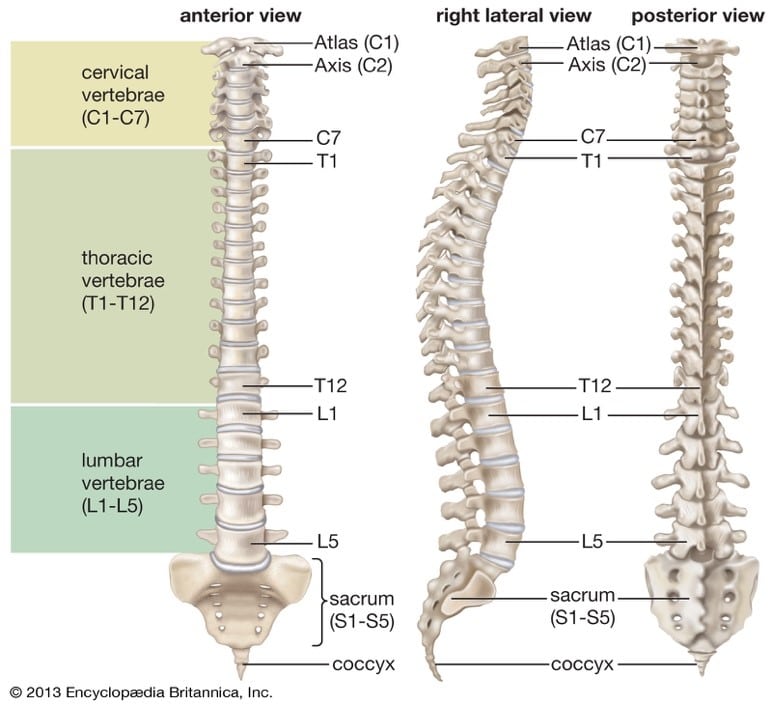Your Mom was Right!

I’m sure many of us remember our Mom (or Dad) telling us to stand up straight when we were children. While that continues to be good advice, it is easier said than done. There are numerous forces that are pushing our bodies into a less than ideal posture, such as gravity, lack of good support, inactivity and poor lifting mechanics. For example, gravity tends to pull us forward, and our work is often in front of us, so we tend to lean forward for prolonged periods of time. Not to mention, if we sit without good support our spines tend to go into a rounded, or flexed position. These postural changes are often contributing factors to many of the aches and pains that we will experience at some point in our lives.
In order to better understand this, it helps to look at the human anatomy and its remarkable features. Look at the human skeletal system from a side view (below). You will notice that the spine is not straight. Rather, it curves inward at the neck (the first 7 vertebrae are the cervical spine), outward at the mid to upper back (the next 12 vertebrae are the thoracic spine), and back inward at the lower back (last 5 vertebrae are the lumbar spine). The spine is not straight when looking from the side, as these curves are better able to absorb shock than a straight spine would.

image via Encyclopaedia Britannica
Again, looking at the body from the side, with ideal posture, if you were to draw a vertical line beginning at the top, the line would go through the ear and all of the joints would be on that line, including the shoulder, hip, knee, and ankle. This is the position in which our muscles, tendons, ligaments, discs, and joints are under the least amount of stress and can function at optimal efficiency. However, due to the forces mentioned earlier, our head and shoulders tend to be forward of that line to varying degrees. When this happens, our back and neck muscles have to work much harder to keep us upright.
To demonstrate this, get something that weighs 8-10 pounds (the average weight of a human head) and hold it close to your body, then slowly extend your arms out in front of you and sense how much harder your arms have to work to hold that weight the farther out you go. Likewise, the back and neck muscles have to work much harder when our head and shoulders are forward of the ideal posture line, and it is this prolonged/ chronic extra work load that can contribute to a variety of problems.
These problems can range from simpler issues such as muscle tightness/trigger points to more serious degenerative changes in the spine and discs, sometimes involving nerve damage. There was even a recent study that demonstrated evidence on x-rays that young people were developing “horn-like spikes” (essentially bone spurs) on the backs of their heads. The conclusion was that these were forming due to “shifting body posture brought about by the use of modern technology.” One name given to this is “text neck.” Over time, our muscles will begin to think they are doing things the way that they should just because they have been doing it that way for so long (muscle memory).
The good news is that there is better advice than simply saying “stand up straight.” Our Physical Therapists have a variety of tools to help retrain muscles to go back to doing things the way they were designed to do them. After doing an individual assessment, we can determine which muscles are tight and which are weak in order to develop an individualized exercise program to address those changes. In addition, we also typically will perform a variety of hands on, manual techniques (stretching, mobilizations, soft tissue work, etc.) to decrease tightness/improve mobility. Our goal is to give each individual that we see the tools necessary to manage things on their own over their lifetime. There are certainly things that are beyond our control, but if you control what you can, chances are you will be able to minimize future problems.
To schedule your 15-minute free consultation with one of our clinics, call 616.827.3010. And don’t forget what your mother told you!
